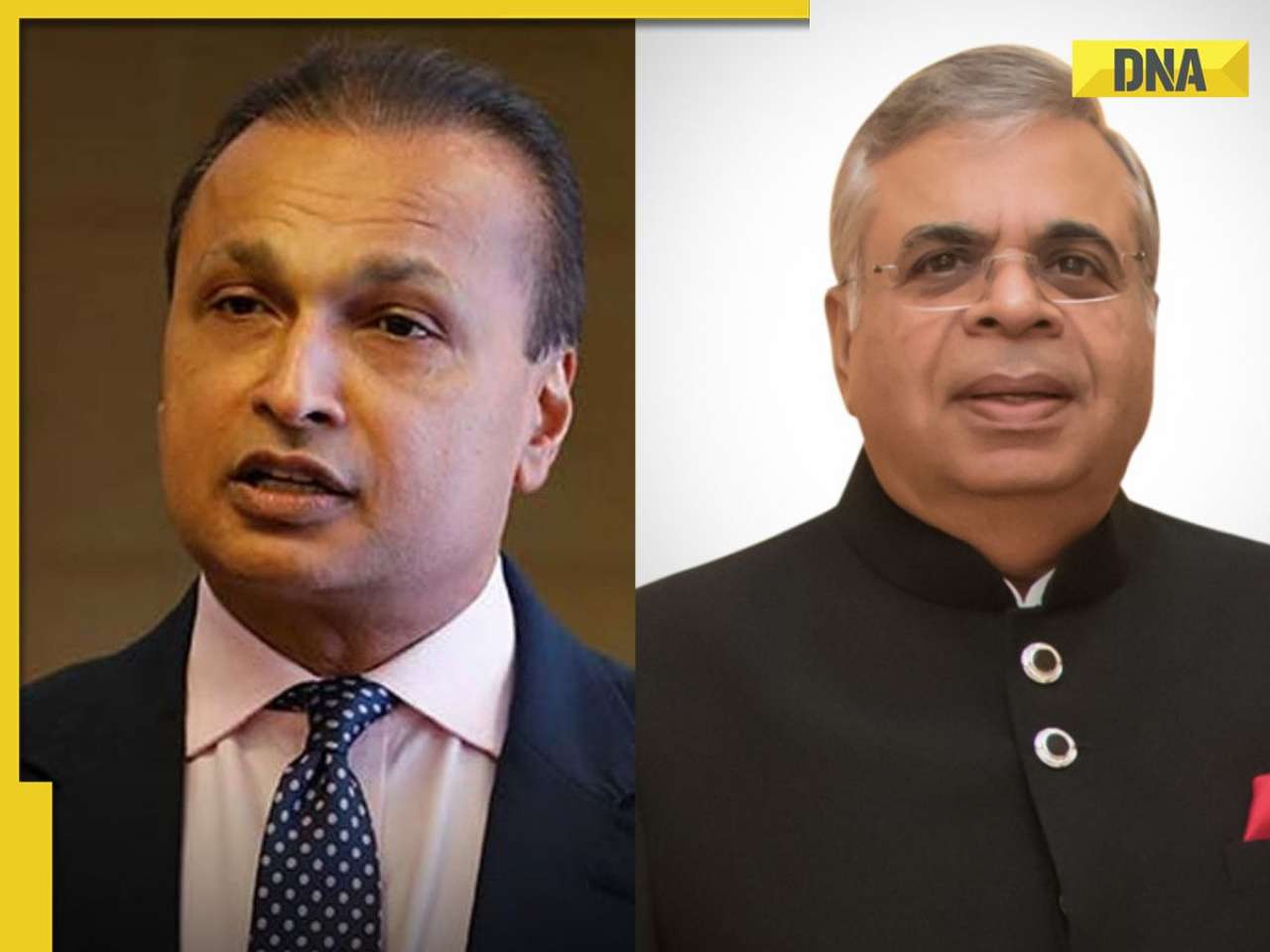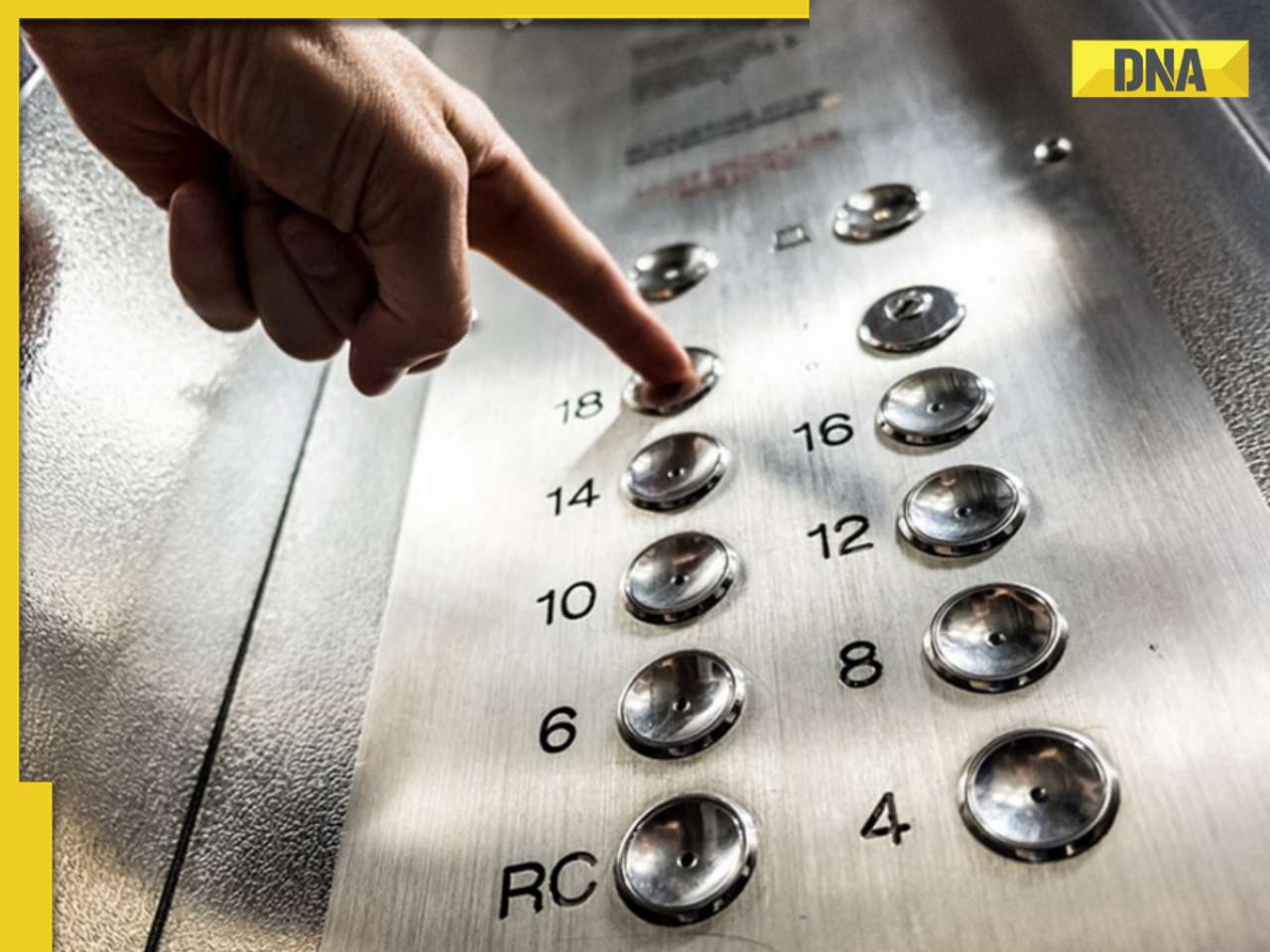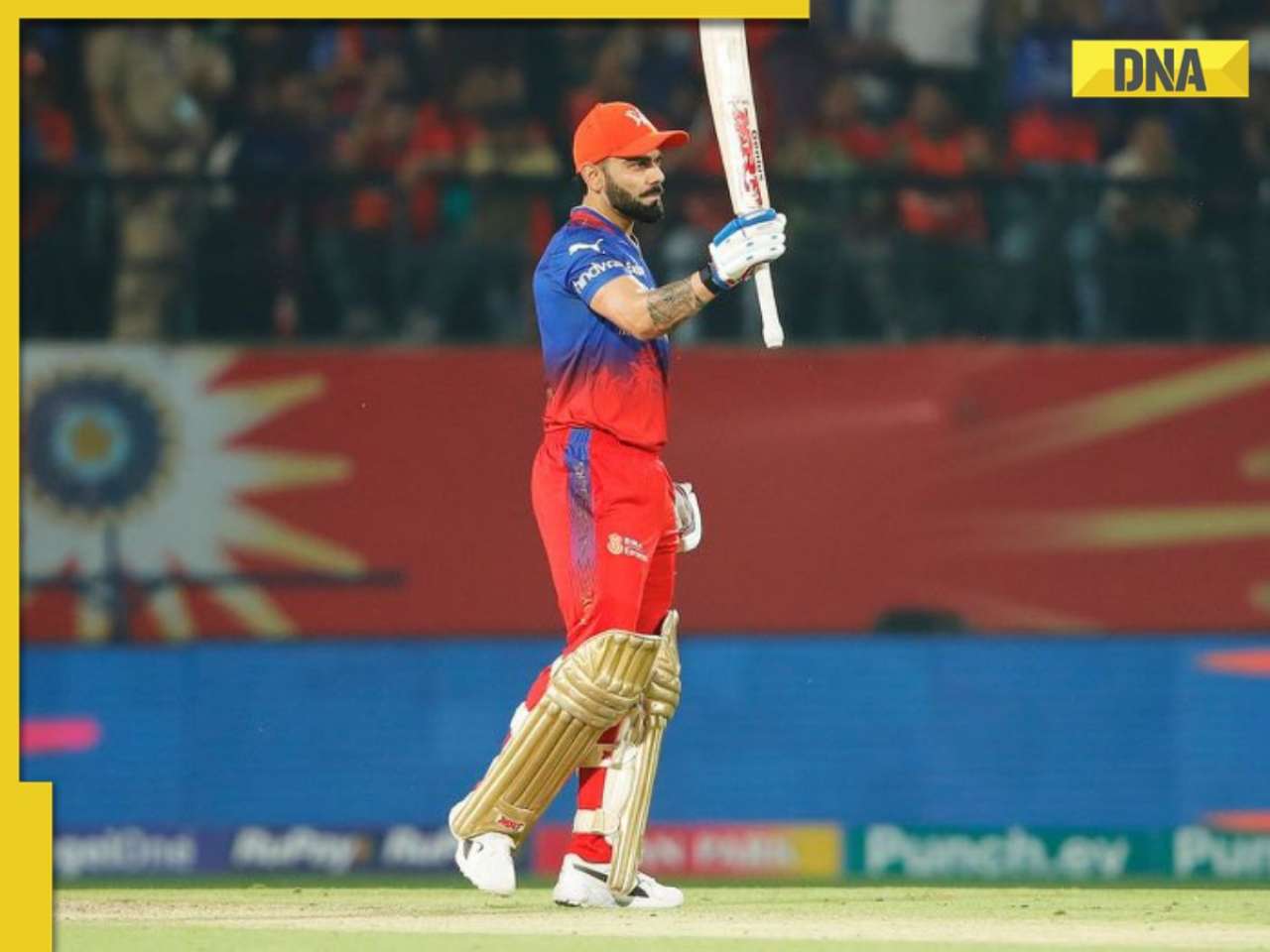The Department of Telecommunications (DoT) appears to be in no mood for a confrontation with the regulator, and is in the process of notifying higher frequency slabs.
NEW DELHI: The Department of Telecommunications (DoT) appears to be in no mood for a confrontation with the regulator, and is in the process of notifying higher frequency slabs that can be allocated to mobile telecom operators.
Reacting to the recent letter from the chairman of Telecom Regulatory Authority of India (Trai) Nripendra Misra, who hit out at the government for deviating from its spectrum allocation recommendations, DoT secretary Siddhartha Behura told DNA Money on Wednesday that DoT’s objective is to remain consistent with the regulator’s views.
“We don’t want to go against or beyond the Trai recommendations,” Behura said, replying to a query on Misra’s letter to him earlier this week.
“DoT would be completely consistent and in conformity with the views of Trai,” he said.
Misra had pointed out in his letter to Behura that higher slabs of spectrum allocation (beyond 7.2 MHz) had been removed by DoT in its recent order, even though Trai had recommended up to 10 MHz of spectrum slab for GSM operators.
But Behura told DNA Money that higher spectrum slabs would also be announced by DoT “within a day or two”.
He admitted that while announcing the new spectrum allocation criteria, DoT should have clarified that a statement on higher frequency slabs was to follow shortly.
However, responding to Misra’s objection that the frequency slab after 6.2 MHz has been fixed by DoT at 7.2 MHz for the same subscriber base that Trai wanted for 8 MHz, Behura said that DoT’s interpretation was that the norm was in sync with the regulator’s recommendation.
However, “we (DoT) will clarify to Trai” if there is a need, he said.
On whether the government was planning to withdraw the extra spectrum that was allocated beyond the current norms to some of the mobile operators, Behura said, “it is premature to talk about it now.”
On the issue of revision of spectrum usage charges to be paid by telcos, the DoT secretary said that the Telecom Commission was examining the matter.
There’s a possibility of these charges going up from the current level of 2 to 6% of their annual gross revenue for spectrum between 4.4 MHz and 15 MHz.
Trai had recommended hiking the spectrum charges, and an internal committee in DoT recently proposed a revenue-share rate of 8% of AGR for up to 5 MHz and an additional 1% for every MHz.
The Telecom Commission is expected to decide on the new spectrum charges on January 22.
Meanwhile, leading mobile player Bharti Airtel on Wednesday said it expects the government to allot additional spectrum to existing operators as per Trai’s recommendation.
“They (government) have no choice but to allot additional spectrum to existing operators as per Trai’s recommendations,” Bharti Airtel chairman Sunil Bharti Mittal said on the sidelines of a summit here.
In his letter to Behura earlier this week, Misra had said, “the DoT decision (on spectrum allocation criteria) is not as per the authority’s recommendation.”
Misra added that the authority is of the opinion that the DoT’s averment that Trai’s recommendation on allocation of spectrum has been accepted will not be correct.
DoT had recently announced that it had accepted the Trai recommendation on revising the subscriber-linked spectrum allocation criteria.
The DoT, in an affidavit before telecom dispute tribunal TDSAT, had also said that, as an interim decision, spectrum is to be allocated based on Trai’s recommendation.
But, while Trai recommended allocation of 8 MHz of spectrum after the 6.2 MHz slab, the new DoT norm has fixed the highest slab for GSM operators at 7.2 MHz.
However, DoT wants telcos to have the same subscriber base for 7.2 MHz frequency slab, as Trai had recommended for 8MHz.
Misra stated that although DoT had accepted the Trai recommendation for allocation of up to 10 MHz of spectrum to GSM operators in a service area, the new order has kept the ceiling at 7.2 MHz.
This is “contrary” to the earlier DoT decision, “and will create an atmosphere of uncertainty and non-level playing field in the sector,” according to Misra.
![submenu-img]() Ramesh Awasthi: Kanpur's 'Karma Yogi' - Know inspirational journey of 'common man' devoted for society
Ramesh Awasthi: Kanpur's 'Karma Yogi' - Know inspirational journey of 'common man' devoted for society![submenu-img]() Tovino Thomas accused of stopping his film Vazhakku's release by director Sanal Kumar Sasidharan: 'The agenda of...'
Tovino Thomas accused of stopping his film Vazhakku's release by director Sanal Kumar Sasidharan: 'The agenda of...'![submenu-img]() PM Modi wears turban, serves langar at Gurudwara Patna Sahib in Bihar, watch
PM Modi wears turban, serves langar at Gurudwara Patna Sahib in Bihar, watch![submenu-img]() Anil Ambani’s debt-ridden Reliance’s ‘buyer’ now waits for RBI nod, wants Rs 80000000000…
Anil Ambani’s debt-ridden Reliance’s ‘buyer’ now waits for RBI nod, wants Rs 80000000000…![submenu-img]() Man in bizarre jeans dances to Tinku Jiya in crowded metro, viral video makes internet furious
Man in bizarre jeans dances to Tinku Jiya in crowded metro, viral video makes internet furious![submenu-img]() Maharashtra Board HSC, SSC Results 2024: MSBSHSE class 10, 12 results soon at mahresult.nic.in, latest update here
Maharashtra Board HSC, SSC Results 2024: MSBSHSE class 10, 12 results soon at mahresult.nic.in, latest update here![submenu-img]() Meet IIT-JEE topper who passed JEE Advanced with AIR 1, decided to drop out of IIT due to…
Meet IIT-JEE topper who passed JEE Advanced with AIR 1, decided to drop out of IIT due to…![submenu-img]() Meet IPS Idashisha Nongrang, who became Meghalaya's first woman DGP
Meet IPS Idashisha Nongrang, who became Meghalaya's first woman DGP![submenu-img]() CBSE Results 2024: CBSE Class 10, 12 results date awaited, check latest update here
CBSE Results 2024: CBSE Class 10, 12 results date awaited, check latest update here![submenu-img]() Meet man, who was denied admission in IIT due to blindness, inspiration behind Rajkummar Rao’s film, now owns...
Meet man, who was denied admission in IIT due to blindness, inspiration behind Rajkummar Rao’s film, now owns...![submenu-img]() DNA Verified: Is CAA an anti-Muslim law? Centre terms news report as 'misleading'
DNA Verified: Is CAA an anti-Muslim law? Centre terms news report as 'misleading'![submenu-img]() DNA Verified: Lok Sabha Elections 2024 to be held on April 19? Know truth behind viral message
DNA Verified: Lok Sabha Elections 2024 to be held on April 19? Know truth behind viral message![submenu-img]() DNA Verified: Modi govt giving students free laptops under 'One Student One Laptop' scheme? Know truth here
DNA Verified: Modi govt giving students free laptops under 'One Student One Laptop' scheme? Know truth here![submenu-img]() DNA Verified: Shah Rukh Khan denies reports of his role in release of India's naval officers from Qatar
DNA Verified: Shah Rukh Khan denies reports of his role in release of India's naval officers from Qatar![submenu-img]() DNA Verified: Is govt providing Rs 1.6 lakh benefit to girls under PM Ladli Laxmi Yojana? Know truth
DNA Verified: Is govt providing Rs 1.6 lakh benefit to girls under PM Ladli Laxmi Yojana? Know truth![submenu-img]() Remember Harsh Lunia? Just Mohabbat child star, here's how former actor looks now, his wife is Bollywood's popular...
Remember Harsh Lunia? Just Mohabbat child star, here's how former actor looks now, his wife is Bollywood's popular...![submenu-img]() Mother's Day 2024: Bollywood supermoms who balance motherhood, acting, and run multi-crore businesses
Mother's Day 2024: Bollywood supermoms who balance motherhood, acting, and run multi-crore businesses![submenu-img]() Rocky Aur Rani's Golu aka Anjali Anand shocks fans with drastic weight loss without gym, says fitness secret is...
Rocky Aur Rani's Golu aka Anjali Anand shocks fans with drastic weight loss without gym, says fitness secret is...![submenu-img]() In pics: Ram Charan gets mobbed by fans during his visit to Pithapuram for ‘indirect campaign’ for uncle Pawan Kalyan
In pics: Ram Charan gets mobbed by fans during his visit to Pithapuram for ‘indirect campaign’ for uncle Pawan Kalyan![submenu-img]() Streaming This Week: Yodha, Aavesham, Murder In Mahim, Undekhi season 3, latest OTT releases to binge-watch
Streaming This Week: Yodha, Aavesham, Murder In Mahim, Undekhi season 3, latest OTT releases to binge-watch![submenu-img]() Haryana Political Crisis: Will 3 independent MLAs support withdrawal impact the present Nayab Saini led-BJP government?
Haryana Political Crisis: Will 3 independent MLAs support withdrawal impact the present Nayab Saini led-BJP government?![submenu-img]() DNA Explainer: Why Harvey Weinstein's rape conviction was overturned, will beleaguered Hollywood mogul get out of jail?
DNA Explainer: Why Harvey Weinstein's rape conviction was overturned, will beleaguered Hollywood mogul get out of jail?![submenu-img]() What is inheritance tax?
What is inheritance tax?![submenu-img]() DNA Explainer: What is cloud seeding which is blamed for wreaking havoc in Dubai?
DNA Explainer: What is cloud seeding which is blamed for wreaking havoc in Dubai?![submenu-img]() DNA Explainer: What is Israel's Arrow-3 defence system used to intercept Iran's missile attack?
DNA Explainer: What is Israel's Arrow-3 defence system used to intercept Iran's missile attack?![submenu-img]() Tovino Thomas accused of stopping his film Vazhakku's release by director Sanal Kumar Sasidharan: 'The agenda of...'
Tovino Thomas accused of stopping his film Vazhakku's release by director Sanal Kumar Sasidharan: 'The agenda of...'![submenu-img]() Ratna Pathak Shah calls Guru Dutt and Bimal Roy's films 'offensive', says, 'women are constantly...'
Ratna Pathak Shah calls Guru Dutt and Bimal Roy's films 'offensive', says, 'women are constantly...'![submenu-img]() Shreyas Talpade recalls how he felt bad when his film Kaun Pravin Tambe did not release in theatres: 'It deserved...'
Shreyas Talpade recalls how he felt bad when his film Kaun Pravin Tambe did not release in theatres: 'It deserved...'![submenu-img]() Anup Soni slams his deepfake video from Crime Patrol, being used to promote IPL betting
Anup Soni slams his deepfake video from Crime Patrol, being used to promote IPL betting![submenu-img]() Real story that inspired Heeramandi: The tawaif who helped Gandhi fight British Raj, was raped, abused, died in...
Real story that inspired Heeramandi: The tawaif who helped Gandhi fight British Raj, was raped, abused, died in...![submenu-img]() Man in bizarre jeans dances to Tinku Jiya in crowded metro, viral video makes internet furious
Man in bizarre jeans dances to Tinku Jiya in crowded metro, viral video makes internet furious![submenu-img]() Lift collides with roof in Noida society after brakes fail, 3 injured
Lift collides with roof in Noida society after brakes fail, 3 injured![submenu-img]() Zomato CEO Deepinder Goyal invites employees' moms to office for Mother's Day celebration, watch
Zomato CEO Deepinder Goyal invites employees' moms to office for Mother's Day celebration, watch![submenu-img]() This clip of kind woman feeding rotis to stray cows will bring tears of joy to your eyes, watch
This clip of kind woman feeding rotis to stray cows will bring tears of joy to your eyes, watch![submenu-img]() Viral video: Seagull swallows squirrel whole in single go, internet is stunned
Viral video: Seagull swallows squirrel whole in single go, internet is stunned























































)
)
)
)
)
)